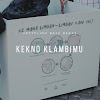Written and illustrated by Karina Nasywa, designer and textiles student.
“I keep wearing the same clothes over and over again. Fashion events are canceled. Is this the future of fashion?”
Almost everyone staying home has had phases of boredom, static, you name it. Although people are pushing their productivity by working from home, learning new recipes, working out, it has never stopped crossing my mind that this could go on until who knows when and what will happen next.
A thought came while I was dressing myself in the morning during quarantine,
“I keep wearing the same clothes over and over again, is this the future of fashion?”
Since various events including fashion week and the prestigious Met Gala are postponed (and cancelled for some) and it got me thinking is the future of fashion really going to be sustainable?
Pantone, a company famous for their Pantone Color Matching System, organized a webinar last April to present their key color trends for Spring/Summer 2021. Even though it seems like it’s concentrated towards color, it also presented a glimpse towards fashion trends especially sustainable fashion. It starts with an introduction of how nature drives and influences design including fashion. It is said that their data is also based on the COVID-19 pandemic we’re facing.
Due to the work-from-home ethic practiced by many companies, factories of fast-fashion will start to delay hence slowing down the fashion cycle. What about buyers? They are also going to buy less products and only purchase essential items such as food and healthcare for example, all through the new normal permanent shopping experience we all know as online shopping.
With everyone staying at home taking care of their body through eating healthier and staying active, there will be an increase in environmental awareness.
Sustainability, even though it’s been practiced since the 60s, is heading towards a postmodern twist in the near future. With everyone staying at home taking care of their body through eating healthier and staying active, there will be an increase in environmental awareness.
Consumers will be opting for products and garments that are handmade products from local communities, made using natural materials that lasts for a long time with a value of great design. Vegan and plant-based fashion are also taking the spotlight not only for people who practiced the vegan lifestyle such as algae ink. The colors will also be season-less to keep an ongoing appeal, timelessness, and versatility to pair with different items in the wardrobe no matter the occasion. The consumers will also be more conscious in extending the life cycle using preloved clothes which we can already see happening currently.
For the born-creatives, upcycling is one of the methods we’ll be seeing. The purpose is to deconstruct the old design and structure to then reconstruct the used materials into a newly designed piece. Other than mending the clothes you have, our sewing machines are going to be pretty handy in the near future.
There’s this term of trend explained in the webinar called feel-good fashion.
We know that color is a powerful tool that affects our mood that is why it is an act of putting on vibrant colors and over-the-top pieces to feel good in ourselves. Let’s face it, we’re still going to stay at home and carry on a certain routine we keep doing daily, weekly, yet monthly for some people and putting on interesting, vibrant pieces could empower and help to keep a positive approach in doing those routines. When we put on exciting pieces it can help us feeling more fresh and incorporating fresh colors continuously makes the piece timeless as well.
There’s a possibility that stores are going to repurpose as their showroom only
How is fast-fashion going to react to this new trend, you asked? There’s a possibility that stores are going to repurpose as their showroom only. Here buyers can view the products and if interested, purchase through the companies online platforms. One of the reasons is to reduce piles of excess inventory. The pandemic disrupts the global supply chain, fashion in particular so one of the ways to counter is with the pull manufacturing system and that is to make what is needed. This system also has benefits such as producing items according to actual consumptions therefore will result in a more precise product, low inventories, and waste reduction.
I’ve noticed an increase of the public’s awareness towards sustainability months before the COVID-19 pandemic happened in Jakarta, Indonesia. Slowly, I started seeing people are selling preloved fashion to expand the garment’s life cycle, using plant-based or ethically sourced materials, and recycling to name a few. Indonesia has a lot of potential for sustainable materials including textiles as the making and harvesting process of natural fibres has been practiced for centuries in certain tribes and areas. It’s important for the government to support innovations in local fashion businesses through promoting local fibre alternatives from indigenous plants found in the country such as ramie, kenaf, water hyacinth, pineapple, banana, or even local hand spun silk.
Another behaviour I’ve been seeing is that mostly young individuals aging from 18-27 years old have begun to take interest on sustainability aspects and some even turned to making a business out of it. During quarantine, I feel fashion is one of the ways to lighten up the mood after days of putting on the same striped pyjamas, the same t-shirt for days in a row and I’m lucky to experience the feel-good fashion trend first-hand with clothes I already have in my own closet.
It takes some time to shift our behaviours and certain acts that we aren’t used to but we have plenty of time to reflect and settle ourselves with the current circumstances. All I can say from joining this webinar, the future of sustainable fashion looks very bright and exciting and I can’t wait to join the movement as it commences. Cheers!









0 Komentar